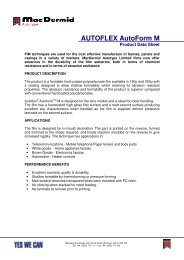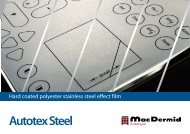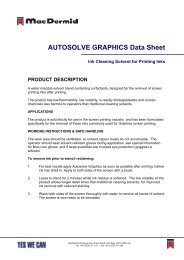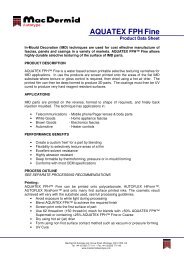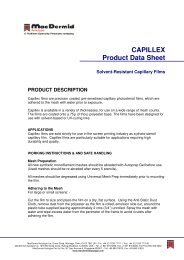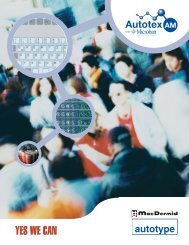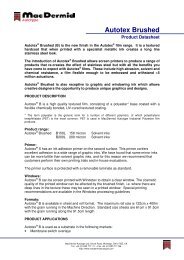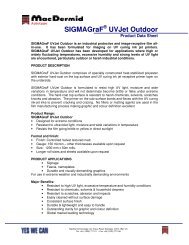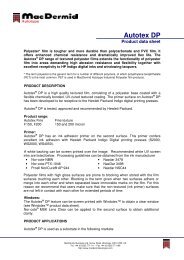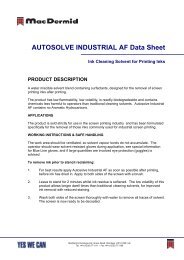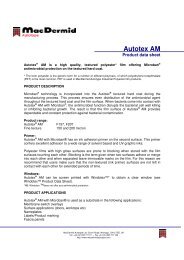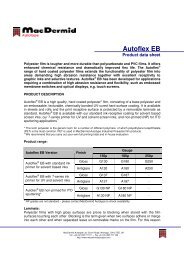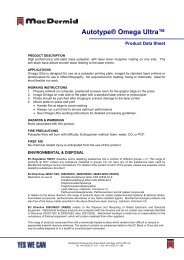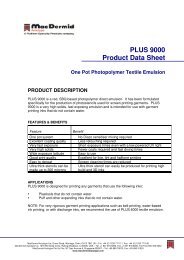Screen E-Book (.PDF) - MacDermid Autotype
Screen E-Book (.PDF) - MacDermid Autotype
Screen E-Book (.PDF) - MacDermid Autotype
- No tags were found...
You also want an ePaper? Increase the reach of your titles
YUMPU automatically turns print PDFs into web optimized ePapers that Google loves.
not perfect. However, careful inspectionshowed that this in no way affected theconclusions about the print sequence.7.- Always have a definition of“truth”We used a high quality colour proof as ourdefinition of truth. The definition of goodcolour, good shadows, grey balance etc.was taken to be the proof.The test imagesIt was important to have a good range oftest images as the different print sequenceswill show different effects on differentimages. We therefore chose (a) a child’sface with lots of difficult skin tone, (b) abeautiful lily for aesthetic reasons [but thischoice turned out to be important as wewill see later on], (c) a fiendishly difficultgrey image, (d) some pretty tulips includinga duotone for educational purposes.In addition we printed standard test stripsfrom Linotype-Hell including the all-importantgrey-balance test area.The test sequencesThere are 24 possible CMYK print sequences.Our mentors narrowed the choicedown to 6 plus the two Caza sequences.This gave us1 CYMK2 KCMY (Caza b)3 YMCK4 MCYK5 MYCK6 YCMK7 CMYK8 CMKY (Caza a)The resultsNeedless to say, we found large differencesbetween the various sequences, and someof the prints were appallingly bad. Dot-ondotgain is not a pretty thing to see! Youcan get some idea of the variations fromthis view of four of the eight sequences.The Caza sequencesWe are very grateful for Michel Caza’s activeintervention in our work. Caza has strongviews, based on his years of printing andteaching, that his “Yellow-last” sequencesare highly effective so we were keen to seehow they compared to more conventionalsequences.55



